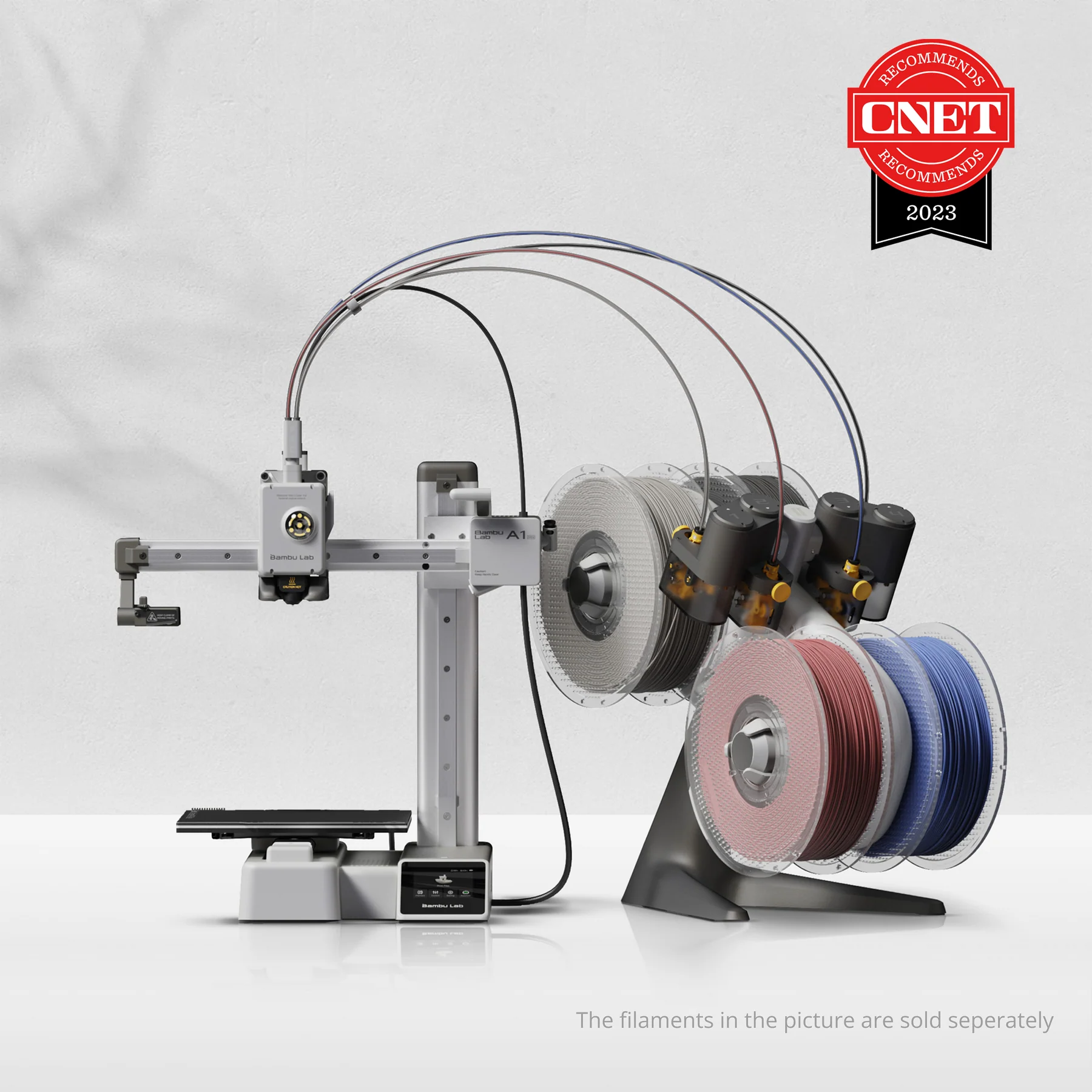Compare Ender 5 vs A1 Mini
Comparison between the best 3D printers
Choose the best 3D printer at the best price. The cheapest 3D printers are here.
Buy a 3D printer here with 3D Fila.
 |
 |
|
| Model | Ender 5[BUY Ender 5] |
A1 Mini |
| Printing Material | Filament | Filament |
| Buy Filament for Creality 3D Ender 5 | Buy Filament forBambu Lab A1 Mini | |
| Estimated price | $399,00 | $549,00 |
| Manufacturer | Creality 3D | Bambu Lab |
| Release Year | 2020 | 2023 |
| Print Volume [mm] | 220x220x300 | 180x180x180 |
| Printer Size [mm] | 485x510x552 | 315x347x365 |
| Weight [kg] | 11,8 | 5,5 |
| Power Loss Recovery | YES | YES |
| Enclosed printer | NO | NO |
| Bed Leveling | Manual | Automatic |
| Filament End Sensor | NO | YES |
| Bed type | Heated | Heated |
| Power supply system | Bowden | Direct Drive |
| Standard nozzle | 0,4 | 0,4 |
| Maximum Nozzle Temperature [°C] | 255 | 300 |
| Maximum Bed Temperature [°C] | 100 | 80 |
| Maximum printing speed [mm/s] | 180 | 500 |
| Filament holder | YES | YES |
| Camera for supervision | NO | NO |
| Recommended filaments | PLA, TPU, ABS, PETG | PLA, PETG, TPU, PVA |
| Recommended slicers | Cura, Simplify, Slic3r | Bambu Studio, Super Slicer, Cura, Prusa Slicer, Orca |
| Maximum Resolution [mm] | 0,1 | 0,1 |
| Processor | 32 bits | 32-bit Silenciosa |
| Display | Mono | Touchscreen 2,4'' |
| Power Supply | 24V / 360W | 150 W |
| Connectivity | SD / USB | Wifi, Bambu bus, Cartão SD |
| Operating systems | Windows, Mac, Linux | Windows, Linux, Macbook |
| Date of registration in the system | 2021-04-15 | 2024-04-10 |
| Release date | 2020 | 2023 |
| Extra features | Crealitys Ender 5 stands out with a solid frame and a larger 220 x 220 x 300mm print volume. Its assembly is simple and quick, offering high print quality and speeds of up to 80mm/s. With a magnetic bed, it makes it easy to remove prints. Notable for being hackable and expandable, the Ender 5 continues Crealitys innovative tradition in the affordable 3D printer market. Equipped with a 350W/24V Meanwell power supply, it heats up quickly, in addition to having efficient cable management and modified Marlin firmware. Its unique design includes dedicated stepper motors for each axis and smooth movement on the Y axis, providing more consistent and detailed prints. | The Bambu Lab A1 Mini stands out not only for its impressive speed and automatic calibration, but also for its multi-color printing capability thanks to AMS Lite. This innovative system makes multi-color printing easy, making it accessible to everyone. AMS Lite, specific to the A1 Mini, supports up to four different materials simultaneously, providing creative freedom without complications. With comprehensive sensors for energy monitoring and recovery, a camera for timelapses and Wi-Fi control, the A1 Mini and AMS Lite together offer an intuitive and advanced 3D printing experience, ideal for materials such as PLA, PETG and TPU, and designed for simplicity and fast maintenance with quick-change nozzles. |
| Support for multiple colors and materials (AMS and CFS) | NO | YES |
Notes * |
||
| Cost-benefit | 7 / 10 | 7 / 10 |
| Hardware | 1.5 / 10 | 4.2 / 10 |
| Tela | . | . |
| Print volume | 3 / 10 | 3 / 10 |
| Performance | 1 / 10 | 4 / 10 |
| [BUY Ender 5] |
Conclusion |
| In concluding the comparison between the Creality 3D Ender 5 and the Bambu Lab A1 Mini, both printers present strong arguments depending on user needs and preferences. The Ender 5, with its larger print volume and a solid construction, appeals to those who prioritize size and the ability to undertake larger printing projects. Its manual bed leveling might require a bit of user engagement, but its established reputation in affordability, simplicity, and hackable features make it a strong contender, especially for enthusiasts or those wishing to expand their printing capabilities over time. On the other hand, the Bambu Lab A1 Mini shines with its impressive printing speed, automatic features, and the ability to handle multiple materials simultaneously thanks to its AMS Lite system. These attributes make it an excellent choice for users interested in straightforward, efficient printing with less manual intervention required. The intuitive operation, combined with a modern interface and advanced sensors, places it ahead in terms of user experience and maintenance efficiency. While the Ender 5 carries a lower price point, the A1 Mini offers cutting-edge features and capabilities that can justify its higher cost for those needing modern features or advanced printing functions. Ultimately, the choice between these two printers should be guided by the specific needs of the user—be it print volume, speed, complexity of operation, or desired materials—ensuring that the selected printer aligns with their 3D printing goals. |

